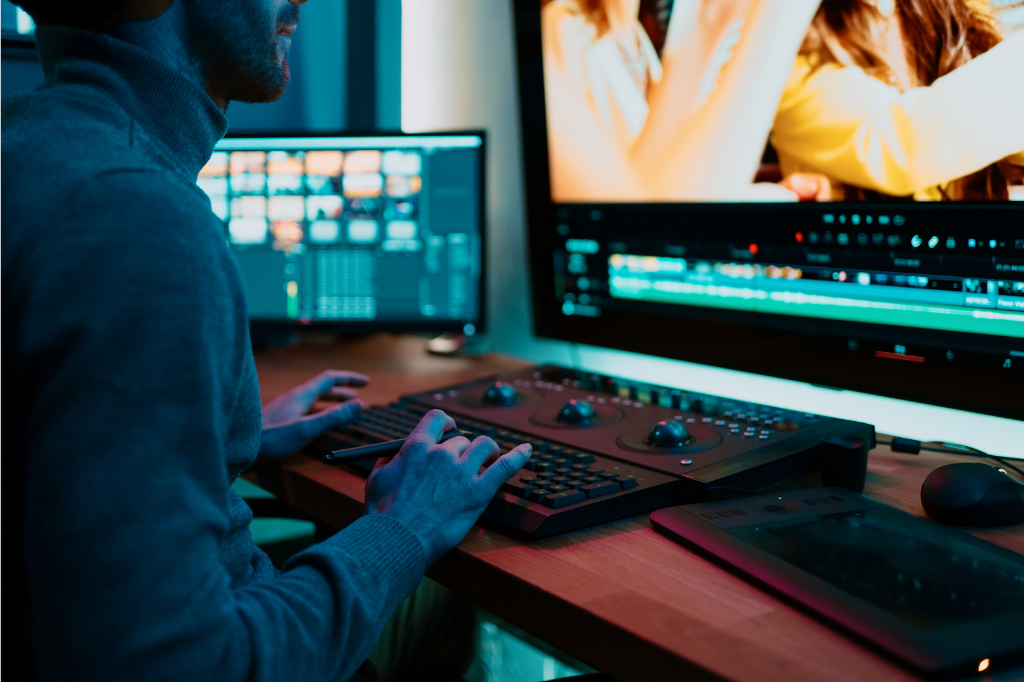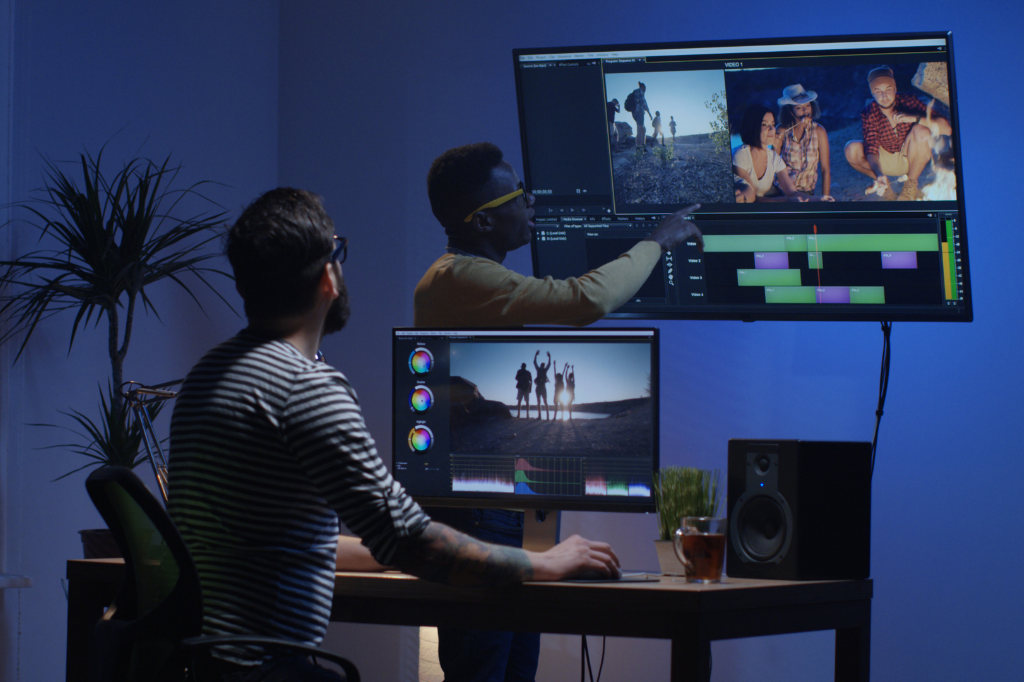Do you sometimes struggle to know when your cuts in your video edits are actually “working”? Perhaps you are new to video editing and have not yet developed that editing “gut feel” more experienced editors are always going on about. We’ve got an inside scoop that can help you with this conundrum, and it is called “the Rule of Six”.
While it is true that video editing is a technical vocation, editing itself is actually less about tools and more about story. In order to become a more intentional editor, you need to start thinking critically about your shots, their order, when you choose to cut and other factors that impact your storytelling.
Today we will introduce you to some of the historical schools of thought regarding editing theory so you can start making more considered editing decisions. Mainly, we are going to focus on Walter Murch and his theory regarding the Rule of Six. Finally, we’ll wrap things up by talking about deductive versus inductive storytelling, which will help you decide how you should open your videos.
WALTER MURCH & THE RULE OF SIX
Let’s dive into Walter Murch and the Rule of Six. Firstly, who is Walter Murch? Walter Murch is an Academy Award-winning editor, and he’s best known for films, such as Jarhead, The English Patient, Apocalypse Now, The Unbearable Lightness of Being and The Talented Mr. Ripley.
Walter Murch gave a seminar for editors that was turned into a book called In the Blink of An Eye. It’s one of the most highly regarded pieces on editing and is filled with incredible nuggets of very practical and very technical advice rather than very overarching, high-level theory, which can sometimes be unnecessarily complicated and not practical enough for real-world editors who need some down-to-earth advice on how to make their edits work.
The Rule of Six is one of Walter’s principles from In the Blink of An Eye. It came about as a response to a question asked by one of the editors in the audience. This particular editor wanted to know something along the lines of, “How do I know if my cuts are effective in my edit?”
Walter’s response was that every cut that you make should satisfy six criteria, but that these criteria aren’t all equally as important as each other. Let’s break it down a little bit more.
#1 EMOTION: 51% IMPORTANCE
First up, we have emotion with a 51% importance weighting. Here are some questions that you can ask yourself while you are editing to know if your cuts are making sense emotionally.
- Are your cuts working for the right emotional tone or feel for what you are going for overall?
- How will this cut affect the audience emotionally at this moment?
#2 STORY: 23% IMPORTANCE
Next up, he gave a 23% weighting of importance to story. The question that you can ask yourself while you are editing is…
- Does the cut, transition or edit advance the story in a meaningful way?
If it doesn’t, you’re probably better off not making a cut or not using that transition at that given point.
#3 RHYTHM: 10% IMPORTANCE
Rhythm comes in next with a weighting of 10% importance. Ask yourself the following question:
- Is the cut making rhythmic sense to support the emotion of the story at this point in time?
Remember, of course, that rhythm is pace. In other words, how long, or how short, how fast or how slow your shots and sequence of shots are.
#4 EYE TRACE: 7% IMPORTANCE
Then we have eye trace with a weighting of 7% in importance. You’ll remember eye trace from our earlier discussion about continuity editing. The questions that you can ask yourself in this instance include:
- Where is the eye of the audience likely to be looking before I make this cut?
- How does this cut affect the movement of the audience’s focus?
#5 2D PLANE OF SCREEN: 5% IMPORTANCE
Second from last with a 5% weighting of importance, we have 2D plane of screen. This refers to the 180-Degree Rule that we discussed when we spoke about continuity editing. Questions that you can ask yourself in this instance are:
- Do the cuts maintain the line?
- And if the intention is to cross the line, is it effective? In other words, is it noticeable enough for the audience to pay attention?
#6 3D SPACE: 4% IMPORTANCE
And lastly, with a 4% importance weighting, we have 3D space. This basically refers to the entire process of ensuring that your viewer is oriented in the 3D space that is being portrayed as 2D on the screen. The question that you can ask yourself in this particular scenario is:
- Did the cut establish the subject’s physical space well enough so the audience understands how they arrived and where they are now?
HOW TO BEGIN YOUR EDIT
So up until this point, we have only discussed things that come into play later on in your edit. But what about the beginning? How do you start your video off in a way that draws the viewer in while giving them enough context to kind of figure out what is going on? This is where the theory of deductive and inductive openings comes in really handy.
DEDUCTIVE OPENINGS
Deductive openings are more classic and more traditional in cinema. They were born out of the fact that when motion pictures were originally being produced back in the day, viewers were not as visually literate as we are now because of the amount of visual media that we consume on a daily basis. Therefore, these original viewers had to be navigated through a space very carefully in order to get the context that they needed before they landed up very close to what was going on in a scene.
As a case study for a deductive opening, we’re going to look at the opening of a film called Hunt for the Wilderpeople, an amazing piece of cinema from director Taika Waititi.
The opening sequence of this film starts with this expansive, soaring drone shot, capturing the wilderness. It’s incredibly appropriate in this particular film, considering the relationship between the people in the movie to this vast open expanse of outdoors. It then cuts to a closer shot of a car driving along the road before moving in for these very intimate close-ups that examine what is going on inside the car. They use these to introduce the characters to us that are gonna be key players in this movie.
INDUCTIVE OPENINGS
Inductive openings are a slightly more modern addition to cinema because we are visually literate enough these days to start with a close-up and then gradually move out to a wide shot that reveals that context. They can also be a little bit harder to pull off because your viewer needs to be navigated quite carefully through that space.
As a case study for this type of opening, let’s look at this film called Brick, crafted by director Rian Johnson. Brick fades up to reveal the main character’s feet in a close-up and then transitions to another close-up of his face. We can see from these shots that he’s obviously looking at something quite intently, but we don’t know what it is. That’s one of the reasons that an inductive opening is so effective. It has the sense of mystery and allure that kind of just pulls you in because we don’t have that full context yet. It’s only when we smash cut to that wide shot that we actually see what our main character is looking at, which in this case happens to be the lifeless body of his ex-girlfriend.
Hopefully, after looking at these two examples of a deductive and an inductive opening, you have a better idea of what they are and when they would be appropriate to use in a given video edit.
That was our brief introduction to the Rule of Six and deductive and inductive openings. We really hope that these principles are something that you can take with you into your next video edit in order to enrich the viewer’s experience of your story. If you would prefer to consume this information in an audiovisual format, check out this video we created for the OrmsTV YouTube channel that covers the same topic.






